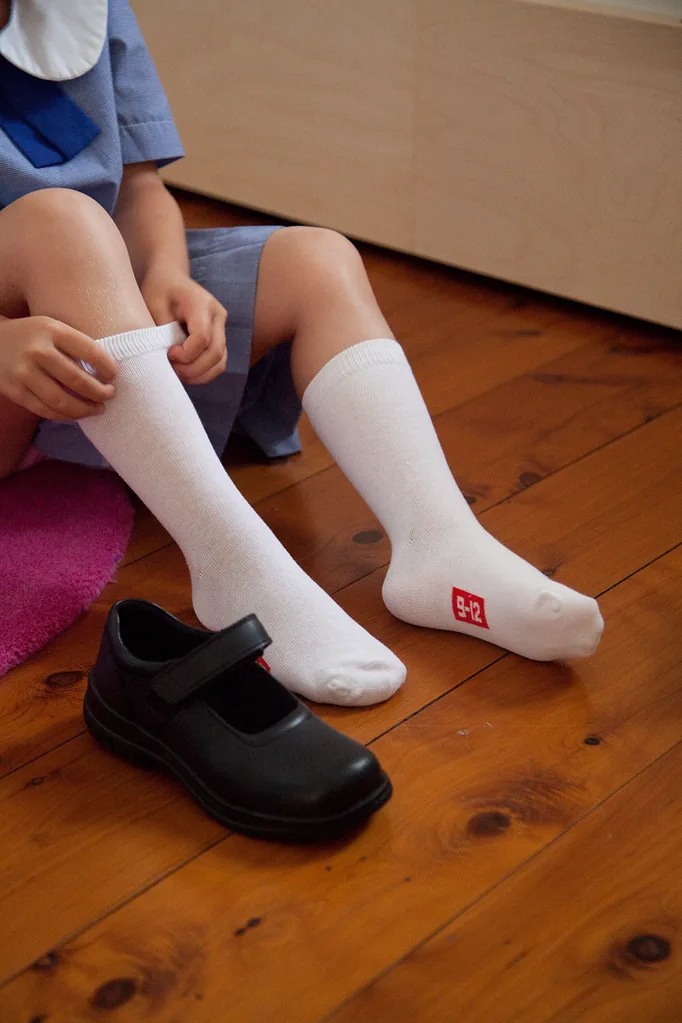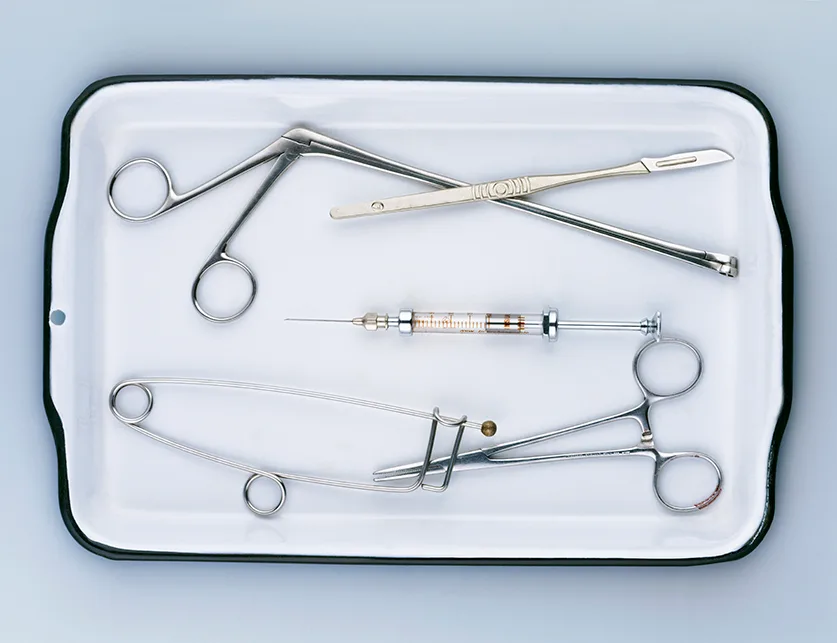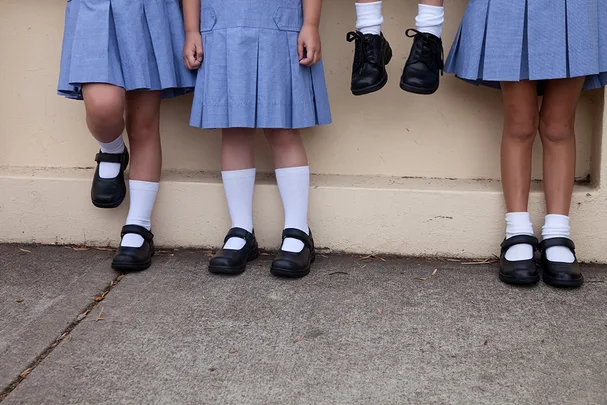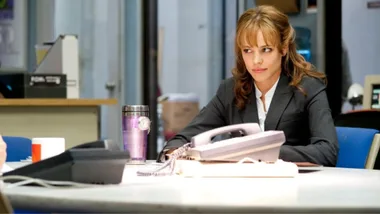Eloise* had hated her vagina since she was eight years old. She was in the bath with her step-sisters one summer’s day when her step-mum pointed out she had an “outie” while they all had “innies”. Her sisters began teasing her incessantly. “I realise now that it’s not such an irregular occurrence, but back then I only wanted to look like my sisters,” says Eloise, now 23. “I was so unhappy and broken about it, from that point onwards I literally didn’t let anyone see me naked.”
High school was a constant battle to avoid change rooms and intimate encounters. After puberty, it became uncomfortable to wear a swimsuit and participate in sports because of chafing. Sex education classes only made things worse when they showed labelled diagrams of supposedly perfect neat vulvas that looked nothing like her own. Eloise thought she must be so abnormal that she was too scared to even tell girlfriends or her mum about it. “I thought if I talked to my mum about the problem she’d take me to doctors to get poked and prodded like a freak,” she says. When Eloise was around 15 she discovered that her “problem” might have a solution. Labiaplasty – surgery to alter or remove part of the labia minora (the inner vaginal lips) so it more closely resembled textbook images of vaginas. She stored the information away.
Shortly after, Eloise fell in love for the first time and trusted her partner enough to let him see her naked, only to have him comment that her vagina looked “weird.”

“It broke my heart and made me want the surgery even more,” says Eloise.
“It wasn’t until I finally broke up with him when I was 22 that I got it done.” In the course of her research into labiaplasty, Eloise realised that her vagina wasn’t actually abnormal. her GP also reassured her that there was nothing wrong with it. But still, the psychological damage wouldn’t heal. Eloise booked in with a private cosmetic surgeon at the end of last year. A week later she was sore and swollen, but back at work. Within a month she was able to have sex again.
“Nothing has been affected, it looks so much better,” she says. “It’s a bit of recovery time, but the pain was gone after a few weeks and, if anything, sex feels better now.” Eloise is part of a growing number of women who are electing to undergo labiaplasty surgery, despite the fact that there’s no diagnosable medical issue with their genitalia. The procedure itself isn’t new – it’s been around since the 1970s. But between 2001 and 2013, the number of Australian women claiming the surgery on Medicare more than doubled from 640 to 1605 annually. One doctor in Sydney claims he performs the procedure 400 times a year. The trend is reflected throughout the developed world – in 2014, labiaplasty was the second-fastest-growing cosmetic procedure in the US, beaten only by buttock augmentation.
By the end of 2014, so many women were requesting the surgery that the Australian government stopped it being claimable on Medicare and private health funds unless it was deemed medically necessary by a doctor. Instead, women now have to pay anywhere between $3000 and $9000 – but even with this price tag, evidence suggests demand has only grown. Most women want the surgery for similar reasons to Eloise – their inner labia are large, uneven or hang down outside their outer vagina lips, and they’re un-happy with how this looks. Jennifer, a 47-year-old-mother-of-two, said she wanted the surgery ever since she had a Brazilian wax and noticed her shape more clearly.
WHAT IS “NORMAL” ?
Labia come in a range of colours and shapes, and most aren’t symmetrical. A 2005 study published in the International Journal of Gynecology & Obstetrics found that women’s inner vaginal lips could be anywhere between 2cm to 10cm long and have a width of 0.7cm to 5cm. The same paper showed that most labiaplasties are performed on perfectly normal tissue. According to Dr Gemma Sharp, a researcher from Flinders University who conducted her PhD on the rise of labiaplasty surgeries, most women go through their lives without seeing another un-retouched vagina.
The Australian classification board stipulates that magazines and films sold and distributed in the “Unrestricted” category (not recommended for people under 15 and below are not allowed to feature labia minora. This means images of naked women are photoshopped to get that “tucked in” look – even if they’re to be used for health or education purposes. Similarly swimwear shoots and advertisements have to be trimmed and edited to leave no trace of a “camel toe” if they want to make it through the classification process.
The rise in popularity of the Brazilian wax doesn’t help, nor does the increased access to online porn meaning men are basing their expectations on unrealistic images. A 2014 study published in the journal Body Image showed that a third of women wanting labiaplasty were teased about their vaginas, often by their partners. “If you get negative comments from someone you love in an intimate situation, that stays with you,” says Dr Sharp. Private clinics don’t need to report data on the number of surgeries they perform, so it’s impossible to obtain official numbers on how many women are getting labiaplasty.
But GP Dr Magdalena Simonis, who authored the guidelines for the Royal Australian College of General Practitioners (RACGP) about how doctors should respond to women requesting genital surgery, suspects it’s far more common than people realise. “It’s something GPs are being flooded with,” she says. A study conducted last year stated one in three GPs are now fielding requests for the procedure from girls under 18.† Yet 50 per cent of the doctors said these girls had diagnosed or undiagnosed mental health issues. Since October 2016 the Medical Board of Australia has advised that girls under 18 who want labiaplasty should receive mandatory counselling, in addition to a cooling off period of three months.
“I wish I’d had it done ages ago,” she explains. “It’s definitely helped me feel more confident in the bedroom.”
But the reality is that an “outie” vagina is completely normal – about half of all women have labia minora that are longer than their labia majora.

“Women seem to have this skewed perception of what’s ‘normal’ and what’s acceptable,” says Dr Simonis. “We’re seeing girls and young women who have very little experience in the world, and presumably very little sexual experience, and they’re prepared to have this radical surgery that’s irreversible.” Many plastic surgeons are equally concerned with how the surgery is sold to vulnerable women. One Sydney clinic told marie claire they get around 10 enquiries every week about labiaplasty and that they turn away at least two to three of these women based on suspicions they only want the surgery due to body dysmorphia, or because they’re under pressure from a partner.
The problem is that for every responsible clinic, there’s another willing to take someone’s money. And the reality is many women are now so concerned about how they look, they’re willing to try anything. Dr Simonis cites a colleague whose patient allegedly went to Thailand for the surgery and woke up with a complete clitoridectomy (removal of the clitoris). On a Reddit forum, someone claiming to be a 14-year-old girl wrote that she hates the look of her vagina so much she’s considering trying to cut off the “excess” tissue herself, seeing as her parents won’t let her get the surgery.
RIGHT TO CHOOSE
The increased demand and spotlight on labiaplasty is causing some experts and politicians to question whether the surgery should be performed at all. In the UK, there’s a renewed push to ban the procedure, seeing as it technically falls under the definition of female genital mutilation (FGM) – the removal of some or all of the external features of a woman’s vagina, often including the labia and clitoris. The World Health Organization defines it as “procedures that intentionally alter or cause injury to the female genital organs for non-medical reasons”. FGM is common practice in many African countries and the Middle East, but is illegal in Australia and the UK.
Unlike labiaplasty, FGM is frequently performed without anaesthetic and is forced upon girls by family members. “We cannot tell communities in Sierra Leone and Somalia to stop a practice which is freely permitted in Harley Street,” MPs on the UK Home Affairs Select Committee wrote in a report, referring to the London street famous for its cosmetic surgery clinics. “Labiaplasty is culturally driven and one would have to ask whether it’s also female genital [mutilation],” associate professor Sonia Grover, director of the Department of Gynaecology at the Royal Children’s Hospital in Melbourne, told SBS in 2012. In Australia, Victorian state legislation already stipulates the removal of the labia minora from girls under the age of 18 as FGM unless it is “necessary for the health of the person”. (As yet no cases of elective labiaplasty surgery on under-18s have been prosecuted.) While feminist writer and Guardian columnist Van Badham doesn’t believe we should enact a total ban on labiaplasty, she is concerned that we’ve reached a point where women are making decisions about their anatomy driven by cultural expectations.
“Women need to make their own choices about their bodies and the skin they feel confident in,” she explains.
“But I wonder how much of it is really women’s choice when the media and culture is feeding them a constant diet of standardisation and telling women that they look abnormal when they don’t.” Eloise finds this viewpoint frustrating. She does admit it would have been nice to find out from a younger age that her vagina looked normal, and adds that education might have been reassuring, but insists only the surgery could make her feel confident. “I think women should wait until they’re 18 and take the time to properly research the surgery,” she says. “But if it will make them more comfortable and happier, why shouldn’t [they] have it done?” Dr Sharp agrees that the last thing women need is more people telling them what they can and can’t do with their bodies. “We have this idea that doing something for appearance’s sake is not a valid reason – especially when it comes to women’s vaginas. We’re more accepting of boob jobs and nose jobs than we are of labiaplasty.”
Her research also shows that, like Eloise, most women are happy with the results of their surgery in terms of function and appearance. There are also positive shifts in educating young girls: resources such as LabiaLibrary.org.au, a website developed by Women’s Health Victoria which provides women with free access to unaltered images of real vaginas. “The big distinction between our culture and the cultures who are performing FGM is that women in Australia have the ability to make the choice for themselves,” says Dr Simonis. “We just need to make sure women are empowered with the right information, so they know their own bodies and their decision is educated.”
This article appears in the September 2017 issue of marie claire, on sale now.










